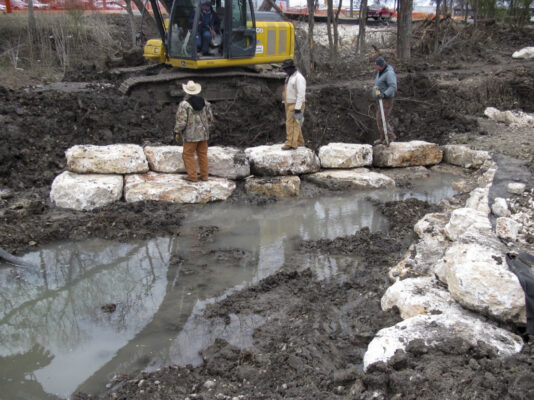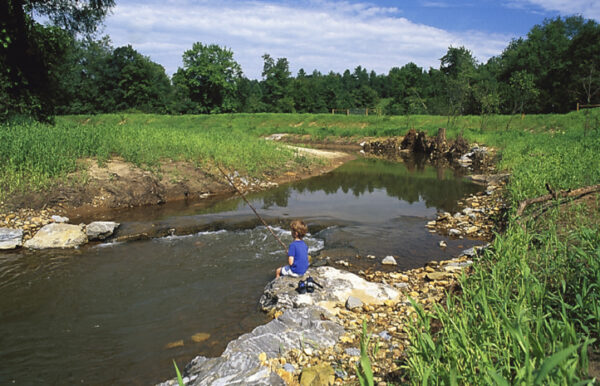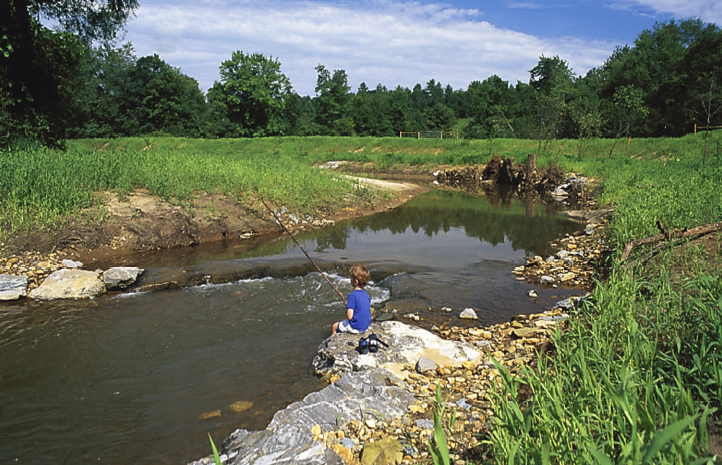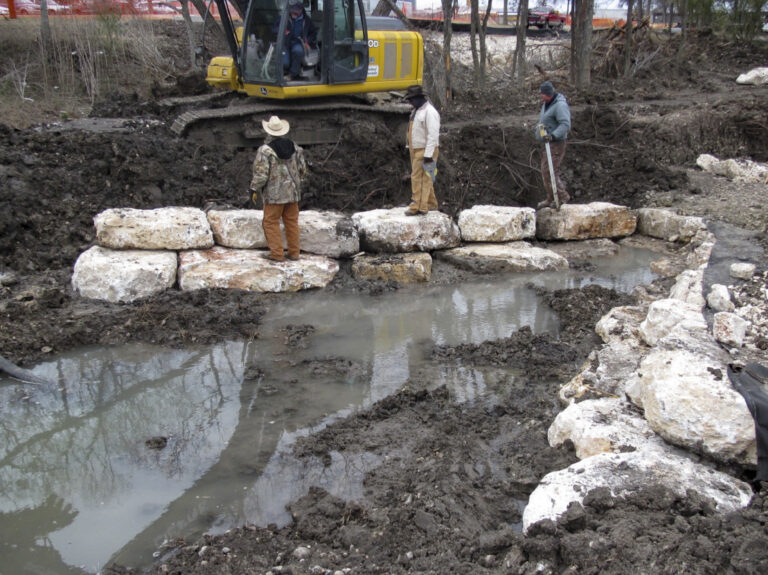Natural Creek Design
English
Español
-
Flood control measures implemented along San Pedro Creek and other local waterways in the 1900s were designed to carry water efficiently downstream away from the city. This required changes to the width and depth of channels that resulted in destruction of natural habitat. A goal of the San Pedro Creek Culture Park was to restore the ecosystem and natural stream functions to the extent possible. In this section of the park, a natural channel design approach was implemented to stabilize the creek bed and banks while creating habitat for aquatic and terrestrial animals within the stream corridor. Various habitats were created through the construction of riffles (areas of shallow, faster moving water) and pools (areas of deeper, slower moving water). Rock cross vane structures were built to protect the banks and create pools by directing shallow water with higher energy toward the center of the channel to naturally maintain the pools.

Source: San Antonio River Authority.
Courtesy: Ecosystem Planning & Resoration.Large limestone slabs placed in the creek bed to create a cross vane structure.

Source: San Antonio River Authority.
Courtesy: Ecosystem Planning & Resoration. -
Las medidas de control de inundaciones aplicadas a lo largo de el San Pedro Creek y otras vías fluviales locales en el siglo XX fueron diseñadas para transportar agua río abajo de manera eficiente lejos de la ciudad. Esto requirió cambios en el ancho y la profundidad de los cauces que resultaron en la destrucción del hábitat natural. Una meta del San Pedro Creek Culture Park era restaurar el ecosistema y las funciones naturales de los arroyos en la medida de lo posible. En esta sección del parque, se implementó un enfoque de diseño de cauces naturales para estabilizar el lecho y las orillas del arroyo mientras se creaba un hábitat para los animales acuáticos y terrestres dentro del corredor del arroyo. Se crearon varios hábitats a través de la construcción de riachuelos (áreas de aguas poco profundas y de movimiento más rápido) y estanques (áreas de aguas más profundas y de movimiento más lento). Se construyeron estructuras rocosas en forma de ángulo para proteger las orillas y crear estanques dirigiendo las aguas poco profundas con mayor energía hacia el centro del cauce para mantener los estanques de forma natural.

Source: San Antonio River Authority.
Courtesy: Ecosystem Planning & Resoration.Grandes losas de piedra caliza colocadas en el lecho del arroyo para crear una estructura rocosa en forma de ángulo.

Source: San Antonio River Authority.
Courtesy: Ecosystem Planning & Resoration.



